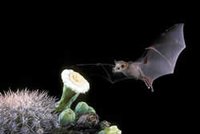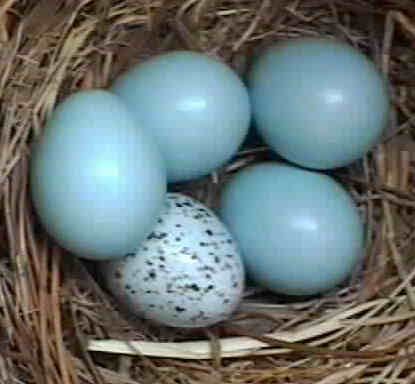Symbiotic Relationships Any relationship in which two species live closely together is called symbiosis, which means "living together." There are three types of symbiosis in nature that biologists readily recognize, they are mutualism, commensalism, and parasitism. |
||||
Mutualism Mutualism is where both participating organisms benefit from the relationship that is shared. An example of mutualism in a desert is the relationship between a long-tongued bat and the saguaro, a type of cactus. When the bat drinks the nectar from the flowers on the saguaro, its head and chest is covered in pollen. When the bat goes to the next flower, it pollinates it. The bat gets food and the saguaro becomes pollinated, both organisms are benefited.  |
Commensalism Commensalism is where there are two organisms that interact together, but only one of the two receives any benefits where as the other is unaffected. An example of this can be found between the cactus wren and the cholla cacti. The cactus wren often builds its nest in the cholla cacti because its needles protect the young nestlings from predators. The wren receives much needed nest protection and the cacti is not affected.  |
Parasitism Parasitism is where, once again, there are two organisms that interact together, but this time one organism receives any benefits and the other is harmed in the process. An example of parasitism is between the oriole bird and the cowbird. A male and female oriole will leave the nest unattended for a time to obtain food. While they are away, a female cowbird will come and lay an egg in their nest. The two types of eggs are similar in size so when the orioles come back they do not notice to spare egg. When the eggs hatch, cowbird chicks are larger and stronger than oriole chicks so the oriole parents will feed the cowbird chick more often than their own. While the cowbird gets most of the food, the oriole chicks do not get fed and will eventually die.  |
||